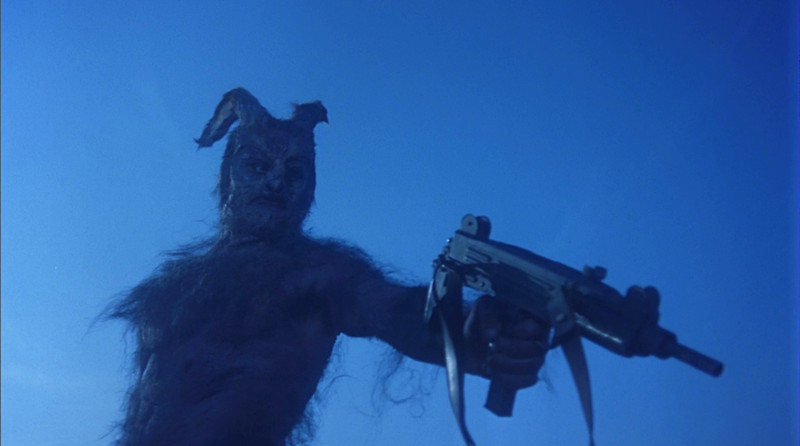
The cinematic world is a very rich one. While it is true that bad films will always outnumber good ones, the irony is that there are and there always have been worthy films that get swept under the carpet by the public, the critics or both.
Some are small and/or independent films from little known (at least at the time) filmmakers, but others can be major studio releases from famous, acclaimed ones as well. Just as bad are films that attain a measure of fame and appreciation, only to unfairly fade with time and changing fashion.
The following list hopes to examine the range of films which may have fallen through the cracks. Some may have a form of cult following among film students/fans (for whom there are no forgotten films). However, to the broader public, they are forgotten, if ever known at all.
1. Ace in the Hole (a.k.a. The Big Carnival, 1951)
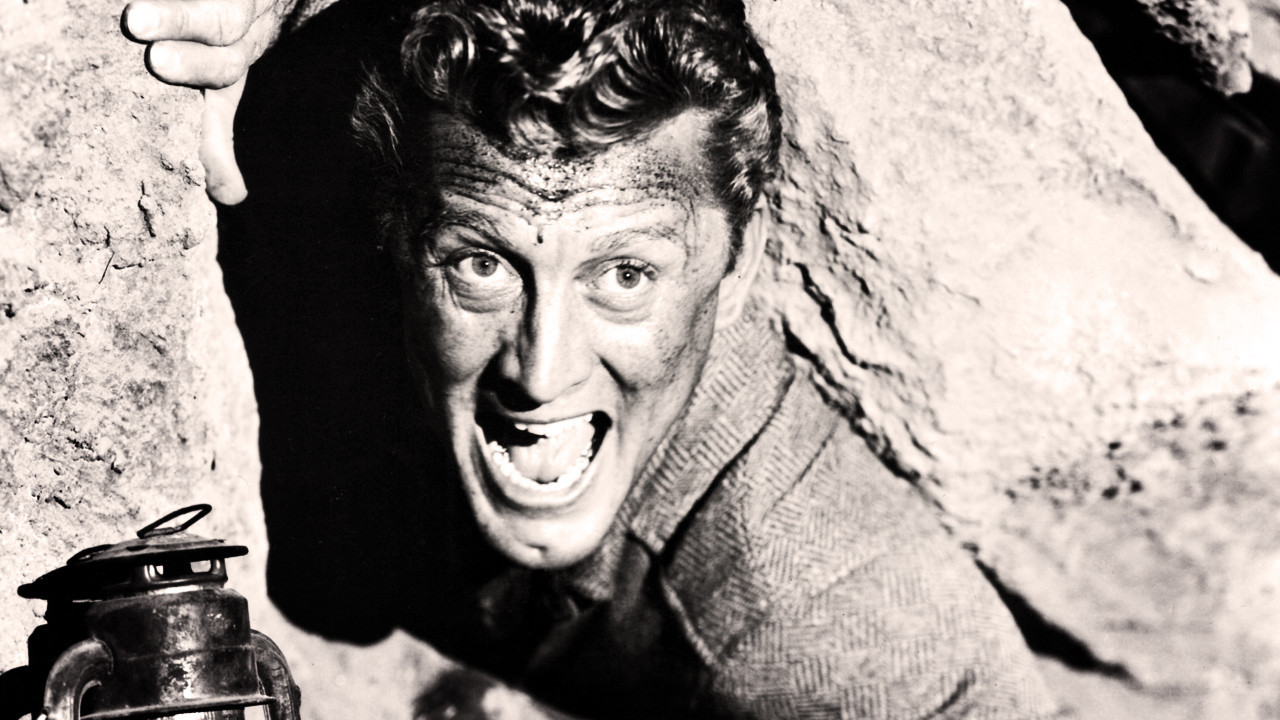
In 1950, Paramount Pictures released a film from Oscar-winning director-writer Billy Wilder and his long time writing partner, Charles Brackett. This was the Hollywood crime story/black comedy “Sunset Boulevard,” which earned the pair another writing Oscar and is surely neither overlooked nor forgotten. This is remarkable, since this great film wasn’t a big box office hit.
That fact surely had something to do with Wilder telling Brackett quite simply shortly after their win, that they had worked together long enough and Wilder was breaking with him. Wilder decided to go it alone and convinced a reluctant Paramount to green light a deeply cynical project the studio was not at all sure about (but the reasoning was that both “Sunset Boulevard” and 1945’s Oscar-winning hit “The Lost Weekend” had inspired a similar reaction).
The story of the film, entitled “Ace in the Hole” (a nasty and cynical title in its own right), centers on a sharp-witted but thoroughly unscrupulous newspaper writer named Chuck Tatum (played to perfection by Kirk Douglas, the most villainous of major stars). When his car breaks down in dusty Albuquerque, New Mexico, he storms into the sleepy offices of the local paper, offering his services at bargain basement rates. It seems that, for reasons having everything to do with his underhanded personal and professional behavior, he is persona non grata with all the major big city papers.
The elderly publisher (Porter Hall) hires Tatum against his better judgement. A year later, a majorly dissatisfied Tatum is looking for the big story that will get him back to civilization. He finds it when, on his way to cover an annual rattlesnake hunting event, he comes upon an isolated little tourist spot in the middle of nowhere.
Sensing something odd going on, he discovers that the owner, a pleasant dolt named Leo (Richard Benedict), has gotten trapped in a nearby cave while looking for native American artifacts. He tells Tatum that he thinks that the vengeful native spirits have trapped him. Bingo! Tatum has his story! Even worse than his exploitation of Leo, the fast talker convinces those trying to rescue the man to take the slowest route in doing so. All the while, the hysteria and the crowd outside the cave grows….
Billy Wilder is quite often described as cynical, but this film is the zenith of cynicism even so. Though the characters of the old publisher and innocent young cub reporter (Robert Arthur) display some humanity, they are the only ones on screen who do. This fact definitely includes Leo’s virtueless, less-than-loving wife Lorraine (Jan Sterling, giving a brilliant, take-no-prisoners performance), who listlessly goes through the loving/concerned wife motions for the promise of money to finance her getaway from Leo. The gawking, sensation-seeking public fares no better. Sadly, the public didn’t come to gawk at this film.
The critics allowed that it was well crafted but were appalled at the relentless negativity (this was Truman-era America, after all). Time has been better to the film and it has a smallish but devoted following (though Paramount never released it on home video and it only finally came out thanks to Criterion in the United States). However, such a bravely strong and bold cinematic statement must be respected.
2. Casque d’Or (1952)
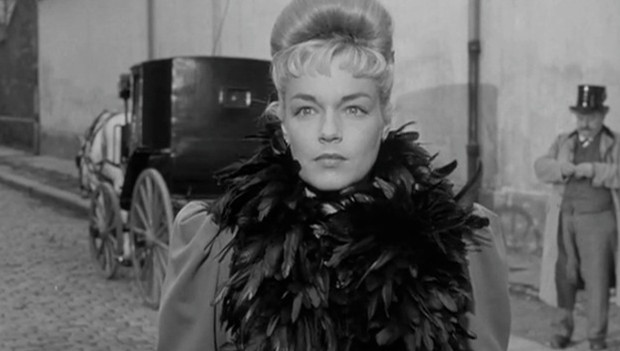
France’s Jacques Becker is respected by both film historians and viewers, but only to what might be called a limited extent. Becker was the longtime regular assistant director to the great Jean Renoir (see the next entry) and as such, was quite respected in film circles. He, not unexpectedly, became a director in his own right in the years France was occupied by German forces (he himself was a prisoner for a year).
Sadly, he would only live to age 53 (a similarity to fellow French director Jean-Pierre Melville) and often created genre films dealing with crime (also much like Melville). As these types of films were often thought of as lesser entries at the time, it’s no surprise that many of them now look better to modern eyes in an era when such films are more valued.
Today such films as “Édouard et Caroline” (1951), “Touchez pas au Grisbi” (1954, and a film which has seen a tremendous rise in its stock), and his masterful last film, “Le Trou” (1960) are known today, but oddly, two of his biggest hits of his own day, “It Happened at the Inn” (1943) and “Casque d’Or” (which was his big award winner) are not so well remembered.
“Casque d’Or” (which translates to “golden helmet”) is a tragic Belle Epoque romance set against the colorful French criminal underworld of the 19th century. The title refers to the lovely blonde hair of the courtesan Marie (the great Simone Signoret, looking like a Gallic Marilyn Monroe but acting far better). Marie is sadly under the thrall of the hateful crime boss Roland (William Sabatier), which becomes even sadder after she meets the humble but handsome, principled and manly carpenter Georges (renowned European actor Serge Reggiani).
The two find love quickly and unexpectedly, a fact that’s not to Roland’s liking. This basic setup leads to a number of deaths and the ultimate devastation of Marie. Before the fates catch up to the lovers, they spend an idyllic time in the countryside, but even that glorious moment is edged in melancholy.
Perhaps this type of unadulterated tragedy is now considered old-fashioned. There is a Balzac-like feel to the plot but, somehow, its fitting for such an honestly and blatantly emotional story. The acting is simply superb (Signoret would become the first French actress to win Britain’s BAFTA award, just as 1959’s “Room at the Top” would not only repeat that feat but make her the first French actor to win an Oscar). Becker may have been working in the classical style which the New Wave critics/filmmakers would soon deride, but his work is that of a master and his film is highly memorable.
3. French Can-Can (1955)
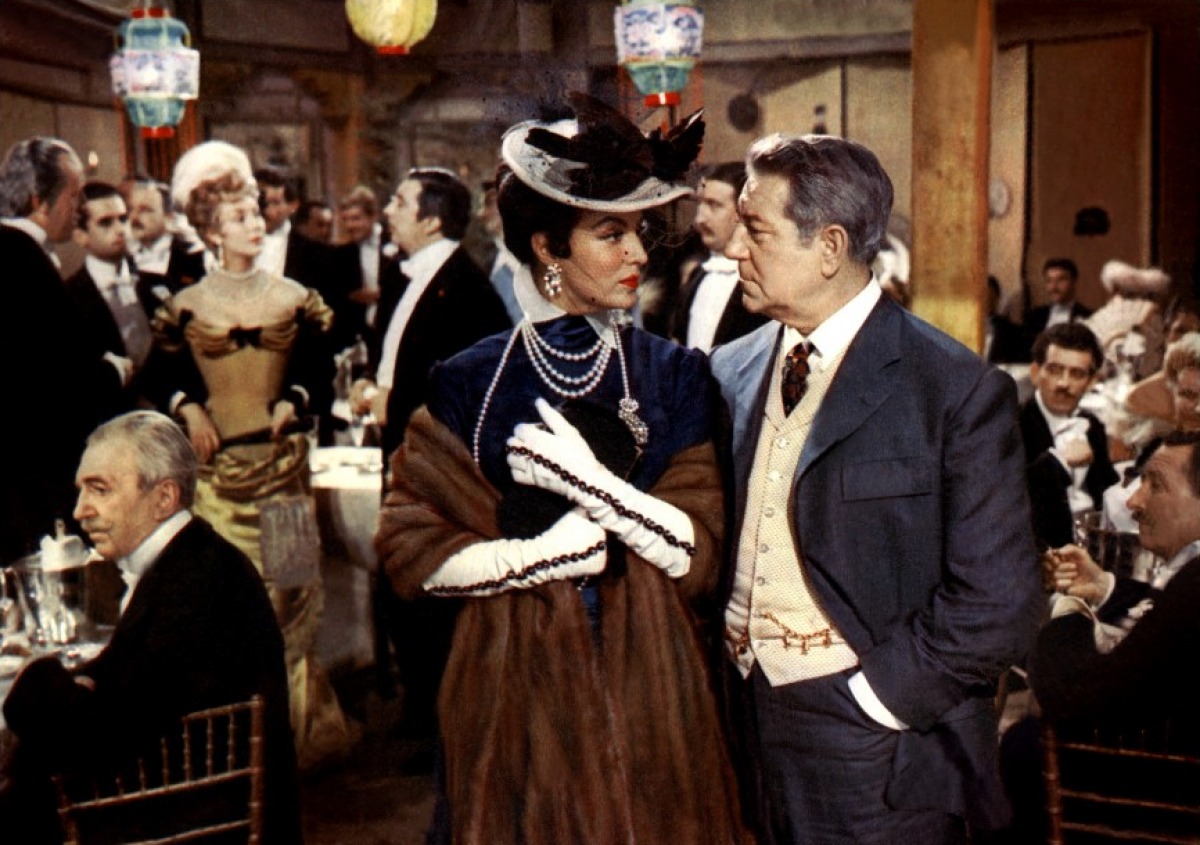
Jean Renoir wasn’t just one of France (and the world’s) greatest directors. In the 1930s he produced a string of masterpieces that spanned the entire period (only Hollywood’s John Ford came close, and during the same period, but he, being more prolific, had a few clunkers). Sadly, Renoir, who stood for everything the Nazis hated, had to flee for his life at the beginning of World War II. He spent most of the 1940s in Hollywood (which he loved far more than it loved him), staying long after the defeat of the Nazis, for he somehow sensed that his homeland would not welcome him back with open arms.
After washing out in Hollywood in 1947, he didn’t film again until the British financed “The River” in 1951, followed up by the international production “The Golden Coach” in 1953 (filmed principally in English, despite having a European cast). However, after that release, he realized that it was time to return home, as he was not only a great artist, but the famed son of one as well. He would make his last six films in the years after his return. Did this period match the earlier one? No, but it would be ridiculous to expect that.
His first post-return film was the musically concerned drama “French Can-Can.” This would also be a nostalgia-laced project since the story is set in the Bohemian Montmartre during the 19th century, a place and period which produced the Impressionists, including Renoir’s lauded father, Pierre-Auguste.
The somewhat light drama finds the owner of a struggling small club in the region not only rekindling his club’s fire, but starting a new craze by reviving the then-somewhat forgotten dance, the Can-Can, with the aid of a talented and unknown young dancer he discovers. The club owner is played by the classic French leading man of the 30s, Jean Gabin (who owed a little to Renoir professionally) with popular French actress Françoise Arnoul as the dancer. They and the script are fine, but these things are not the great elements of the film.
Renoir had never worked in color before “The River” but, to the surprise of no one, his command of color was worthy of his father. He is simply one of the great color filmmakers and this exquisite film, which features flawless period sets and costumes to be captured by the cinematography, is surpassingly lovely. The best of his earlier films are among the enduring monuments of film. If his later ones aren’t in that league, they are far better than the films of many others.
4. A Time to Love and a Time to Die (1959)
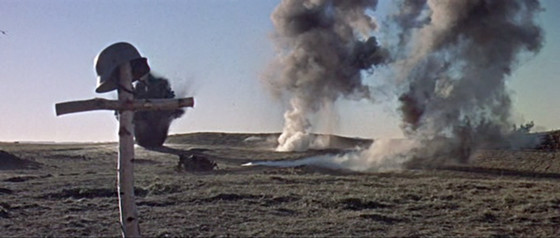
German émigré and Hollywood-based director Douglas Sirk is known today as one of the foremost ironists the cinema has produced. To examine his biography in any detail can only demonstrate how apt is this appellation.
In the pre-Hitler era, he was embarking on a most serious and promising career in the acclaimed German stage and screen milieu of that time. However, a Jewish second wife and an ex-wife who was a fervent Nazi caused him to flee, leaving behind his only child, a son who became a child star in Nazi propaganda films and who would die on the Russian front.
Sirk and his wife made it to an indifferent Hollywood, where they would subsist as chicken farmers until 1943’s “Hitler’s Madman,” a film made for one of the most impoverished of poverty row studios, hit and gave him an entrée into the American film industry. The next few years saw Sirk bouncing from one independent film to another (delivering some of his best, if least seen, work) with the occasional studio picture thrown in.
Then, in 1951 the one-two punch of the fine indie drama “The First Legion” (one of his very best) and the convent-based murder mystery “Thunder on the Hill” (with Claudette Colbert as a mother superior!) landed him a long term contract with the latter film’s studio, Universal-International… for better and worse.
Though Universal had existed since the early days of Hollywood, it had largely struggled since the early sound era and was mostly the home of less-than-stimulating genre pictures (ironically, Sirk’s successful films would go far to put the studio in the forefront). For the first half of the 1950s, Sirk was assigned to mostly mundane comedies and westerns.
Then he was told to direct a remake of the rather outrageous “woman’s picture” “Magnificent Obsession” (1954). He hated the script and most of the casting, including a handsome but shallowly talented new leading man improbably named Rock Hudson (who would end up owing Sirk much career-wise) and he directed in a highly theatrical, mannered style which was very distanced from the material.
Of course, it was a big hit and led to a slew of similar hit films, none of which were close to Sirk’s heart. Finally, the somewhat grateful studio allowed Sirk to direct films of his own choosing. The first was 1958’s “The Tarnished Angels” (taken from William Faulkner’s novel “Pylon”), his one big box office flop, which Hudson openly bad-mouthed, ending their partnership (though many now consider the film Sirk’s finest hour).
The studio gave him one more personal try, this time (in contrast to “The Tarnished Angels”) in the vivid color Sirk used so well and, also, in anamorphic widescreen (his first in that format since 1957’s big hit “Battle Hymn”). One of Universal’s finest films had long been their 1930 adaptation of German author Erich Maria Remarque’s World War I paean against war, “All Quiet on the Western Front.” The studio allowed Sirk to choose a newer Remarque novel, “A Time to Live and a Time to Die” (‘live’ changed to ‘love’ for the film), much like before but this time centering on a different war (World War II).
The plot concerns a war-weary young German officer returning to his ravaged hometown on furlough during the last days of the war, only to find it devastated and his family vanished into the chaos. He also finds love with a young woman who has suffered sad losses of her own. Though they find tenderness in a time of horror, tragedy is never far away, as evidenced by an ironic ending reminiscent of the earlier film’s famous conclusion.
Sirk is in full charge of the film’s careful mise-en-scene and the subject was surely close to his heart. One problem to many was the casting of John Gavin, a good looking but very wooden actor the studio was hoping to turn into a younger version of Hudson. While Hudson was often underrated (he did have star charisma and a way of connecting to the public), audiences often had Gavin’s number (he entered acting quite reluctantly and rarely rose to the occasion).
Here, Sirk actually got a performance out of him. German actress Lilo Pulver is touching as his love interest, and the film has a fine cast of character actors including Keenan Wynn, Don DeFore, Thayer David, young and then-unknowns Klaus Kinski and Jim Hutton, and surprisingly, Remarque himself as a sympathetic professor.
Perhaps too sad for the broader public, this was Sirk’s penultimate film (with his finale being his biggest box office hit, 1959’s “Imitation of Life,” before an ironically dramatic bout of blindness ended his Hollywood career). However, if one seeks this film out, its quality may surprise.
5. The Big City (a.k.a. Mahanagar, 1963)
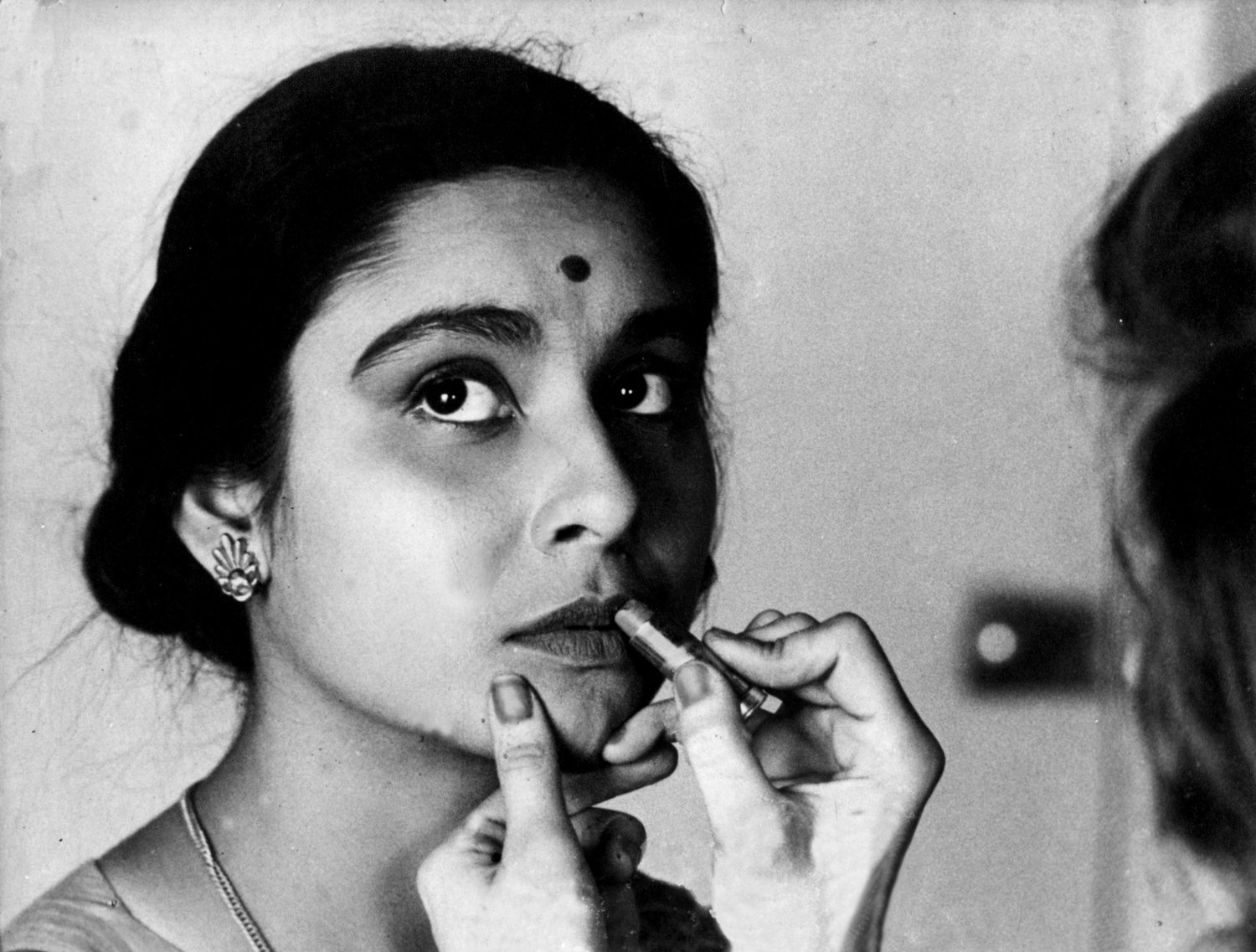
Indian filmmaker Satyajit Ray was in the curious position, even during his lifetime, of being both one of the most globally praised and simultaneously unknown (outside of India, at any rate) great filmmakers. This was completely encapsulated when he was given an honorary Oscar on his literal death bed (with only a few days of life left in him), with him giving a most gracious acceptance speech nonetheless, only to have the audience sit in stunned silence during his tribute reel, full of images completely unfamiliar to them.
Ray had loved film from an early age (in his speech he spoke of his fan letters to juvenile film star Deanna Durbin and also Billy Wilder after seeing 1944’s “Double Indemnity”). Though he mainly was an office worker and commercial artist in his youth, he wrangled a job as one of Jean Renoir’s assistants during the making of 1951’s “The River,” shot in India. With just that much experience and very little money and equipment he created the superb films of what would become known as The Apu Trilogy from 1955 to 1959.
Right from the start, his genius as writer and director was evident and remained so for the 33 films that followed the trilogy. He displayed enormous technical skill as writer and director with both of these roles being informed by his understanding and compassion of human beings in general (his actors frequently spoke of the uncanny way he knew just how to bring out the best and most needed qualities from them with seemingly little effort).
Ray was often concerned with the role of women in the then-newly independent and emerging India. “The Big City” would prove to be a seminal film in this regard. The plot is one even Hollywood would use, though the handling and resolution is quite different from other films of the time. A timid and subservient housewife (Indian film star Madhabi Mukherjee) decides to help her financially pressed household by going to work as a door-to-door saleswoman. Her proud husband (Anil Chatterjee) is not pleased, especially after he loses his own job.
The wife proves to be good at her job and prospers and the husband comes to appreciate her in this role long before the film’s conclusion. However, as in the real world, life can be full of unhappy surprises (though Ray leaves room for believable hope). This is a wise and compassionate film (even the husband’s side of things is understandable) with a decent respect for ordinary life. Like all of Ray’s work, it is a cinematic gift.